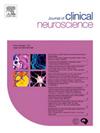Paediatric ventriculoperitoneal shunt obstruction and cerebrospinal fluid protein
IF 1.8
4区 医学
Q3 CLINICAL NEUROLOGY
引用次数: 0
Abstract
Background
Ventriculoperitoneal shunt (VPS) insertion is a life-saving intervention for hydrocephalus. Device failure is extremely common, and carries immense morbidity for patients, their families, and the healthcare system. Predicting shunt obstruction remains a substantial challenge. Clinically, cerebrospinal fluid protein (CSFp) is suspected to contribute to VPS obstruction, this is widely debated, and definitive evidence is lacking. We assess the relationship of CSFp in predicting VPS failure in children.
Methods
A retrospective review of VPS procedures at the Queensland Children’s Hospital between 2014–2019 was conducted. The relationship between CSFp level and outcome were explored. A conventional CSFp threshold above 500 mg/L is considered elevated, however a continuous relationship was assessed to better describe concentration associations. Outcome variables were early (<90-days) and late VPS obstruction (<1-year). A CNS infection was reason for exclusion. A logarithmic correction was applied to CSFp (Log-CSFp) for statistical modelling.
Results
552 procedures were assessed in 243 patients. Fifty-eight (10.5 %) VP shunts obstructed within 90-days, 87 (15.8 %) within 1-year. 63 patients (25.9 %) experienced an episode of <1-year VPS obstruction. Multivariate analysis found Log-CSFp was predictive for early VPS obstruction (OR 1.40, 1.20–1.63, p < 0.0001), and late VPS obstruction (OR 1.37, 1.17–1.62, p < 0.0001) independent to hydrocephalus aetiology, patient age, and CSF red blood cell count. Older patient age was a significant protective factor for late VPS obstruction (OR 0.89, 0.82–0.96, p = 0.002).
Conclusions
CSFp holds prognostic value for VPS obstruction in paediatric patients, a relentlessly unpredictable complication of VPS devices, informing procedure timing, patient follow-up and risk-stratification.
小儿脑室腹腔分流梗阻与脑脊液蛋白
背景脑室腹腔分流术(VPS)的插入是脑积水的救命干预措施。设备故障是极其常见的,并带来巨大的发病率患者,他们的家庭,和医疗保健系统。预测分流梗阻仍然是一个重大挑战。临床上,脑脊液蛋白(CSFp)被怀疑与VPS阻塞有关,这一点存在广泛的争议,缺乏明确的证据。我们评估CSFp在预测儿童VPS衰竭中的关系。方法回顾性分析2014-2019年昆士兰州儿童医院VPS手术流程。探讨CSFp水平与预后的关系。传统的CSFp阈值高于500 mg/L被认为是升高的,但是为了更好地描述浓度关联,评估了连续关系。结局变量为早期(90天)和晚期VPS阻塞(1年)。中枢神经系统感染是排除的原因。对CSFp (Log-CSFp)进行对数校正以进行统计建模。结果243例患者共接受552种手术。58例(10.5%)VP分流管在90天内阻塞,87例(15.8%)在1年内阻塞。63例患者(25.9%)经历了1年的VPS梗阻。多因素分析发现Log-CSFp可预测早期VPS阻塞(OR 1.40, 1.20-1.63, p <;0.0001),晚期VPS梗阻(OR 1.37, 1.17-1.62, p <;0.0001)与脑积水病因、患者年龄和脑脊液红细胞计数无关。老年患者年龄是晚期VPS梗阻的重要保护因素(OR 0.89, 0.82-0.96, p = 0.002)。结论scsfp对儿科VPS阻塞患者具有预后价值,这是VPS装置不可预测的并发症,可为手术时机、患者随访和风险分层提供信息。
本文章由计算机程序翻译,如有差异,请以英文原文为准。
求助全文
约1分钟内获得全文
求助全文
来源期刊

Journal of Clinical Neuroscience
医学-临床神经学
CiteScore
4.50
自引率
0.00%
发文量
402
审稿时长
40 days
期刊介绍:
This International journal, Journal of Clinical Neuroscience, publishes articles on clinical neurosurgery and neurology and the related neurosciences such as neuro-pathology, neuro-radiology, neuro-ophthalmology and neuro-physiology.
The journal has a broad International perspective, and emphasises the advances occurring in Asia, the Pacific Rim region, Europe and North America. The Journal acts as a focus for publication of major clinical and laboratory research, as well as publishing solicited manuscripts on specific subjects from experts, case reports and other information of interest to clinicians working in the clinical neurosciences.
 求助内容:
求助内容: 应助结果提醒方式:
应助结果提醒方式:


